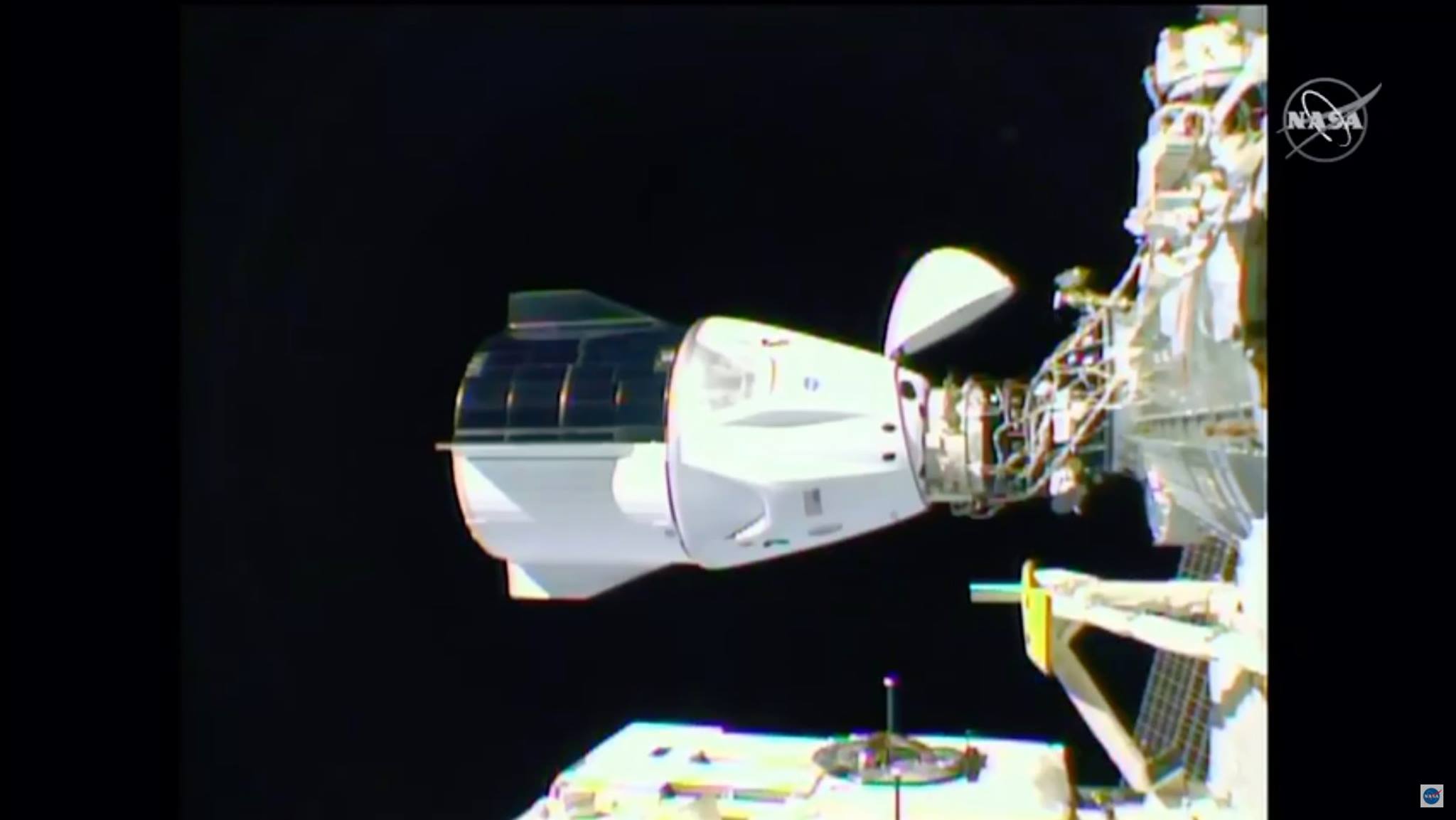
For SpaceUpClose.com & RocketSTEM
KENNEDY SPACE CENTER, FL – Just over 27 and a half hours after Sunday’s (Nov. 15) flawless blastoff from NASA’s Kennedy Space Center in Florida on a Falcon 9 rocket, the SpaceX Crew Dragon Resilience successfully docked to the International Space Station (ISS) at 11:01 p.m. EST Monday (0401 GMT Tuesday), carrying the very precious cargo of four humans – namely NASA astronauts Michael Hopkins , Victor Glover, Shannon Walker, and Japan Aerospace Exploration Agency (JAXA) astronaut Soichi Noguchi on NASA’s SpaceX Crew-1 mission who join the three resident humans already on board.
With the arrival of the new four person crew from Crew-1 the ISS will be enlarged to start a long duration crew of seven resident spaceflyers for the first time in its history – for what now marks the Expedition 64 crew increment. Initially ISS was home to two and three member long term expedition crews.
Since 2009 the ISS has normally been staffed with a permanent resident crew of six astronaut and cosmonaut crewmates living and working aboard the massive orbiting lab complex.
Crew Dragon Resilience docked at the stations Harmony module’s forward-facing port on its first ever operational mission for NASA.
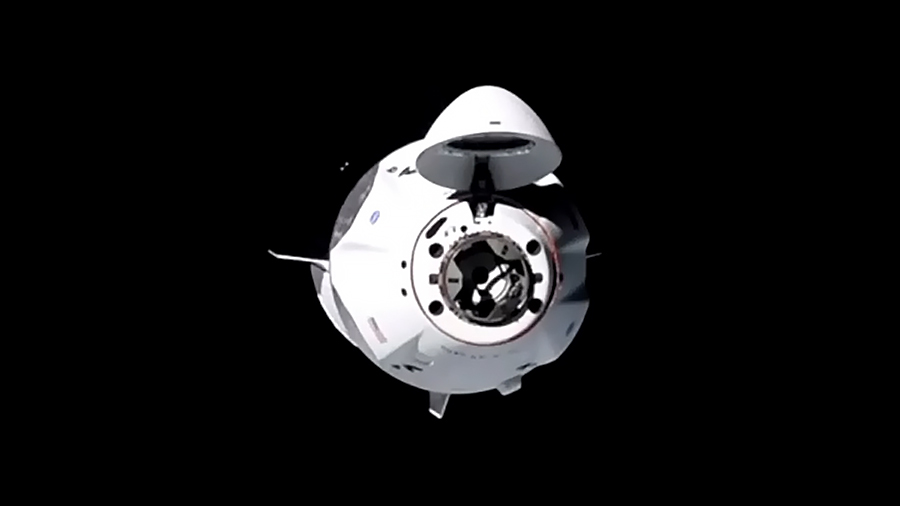
“Welcome to the @Space_Station, Crew-1! The @SpaceX Crew Dragon “Resilience” successfully docked at 11:01pm ET, with @Astro_Illini, @AstroVicGlover, Shannon Walker, & @Astro_Soichi aboard. After the hatch opening, they’ll join the crew on the orbiting lab,” NASA tweeted.
Welcome to the @Space_Station, Crew-1! The @SpaceX Crew Dragon "Resilience" successfully docked at 11:01pm ET, with @Astro_Illini, @AstroVicGlover, Shannon Walker, & @Astro_Soichi aboard. After the hatch opening, they'll join the crew on the orbiting lab: https://t.co/V5EKeq76Ml pic.twitter.com/x2OeNkZpWJ
— NASA (@NASA) November 17, 2020
Crew Dragon docked autonomously without any intervention from the Crew-1 astronauts – who monitored the progress.
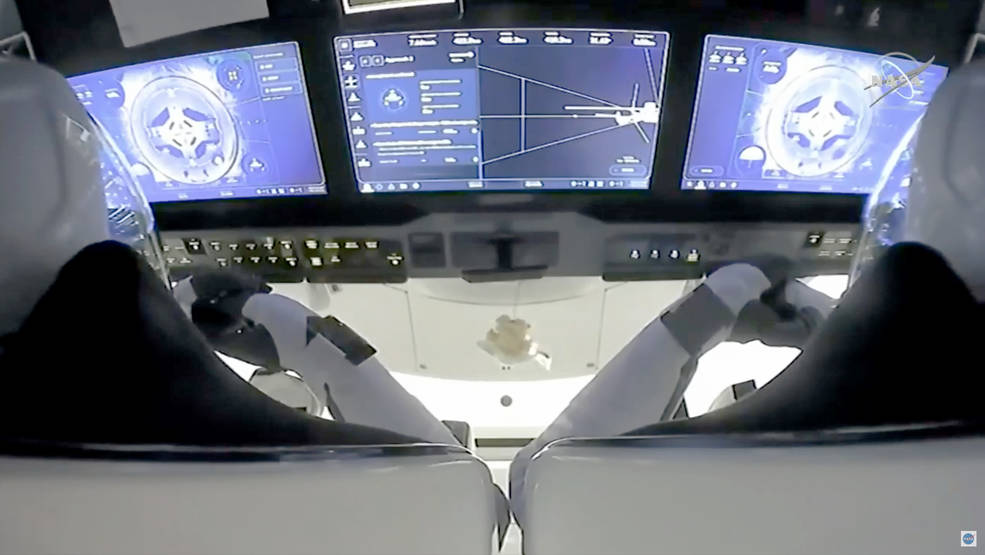
On approach ‘Baby Yoda’ was visible for quite awhile floating inside Crew Dragon as the ‘high tech zero-G indicator’ between Hopkins and Glover seated in front of the control panels.
After completing the hard docking of Crew Dragon to the ISS by driving the hooks and latches home and carrying out standard safety and leak checks and pressurizations they opened hatches between the two spaceships at about 1:10 a.m. Tuesday, Nov. 17 and floated through from Dragon to station.
“The Crew Dragon “Resilience” docked at 11:01pm ET. With confirmation of hard capture complete at 11:13pm, the spacecraft with NASA’s @SpaceX Crew-1 astronauts aboard is officially attached to the @Space_Station,” NASA tweeted.
The Crew Dragon "Resilience" docked at 11:01pm ET. With confirmation of hard capture complete at 11:13pm, the spacecraft with NASA's @SpaceX Crew-1 astronauts aboard is officially attached to the @Space_Station. pic.twitter.com/Y63gk0Spma
— NASA (@NASA) November 17, 2020
“SpaceX, this is Resilience, excellent job right down the center,” Commander Hopkins radioed SpaceX mission control in Hawthorne, California. “SpaceX and NASA, congratulations. This is a new era of operational flights to the International Space Station from the Florida coast.”
"Soft capture confirmed." "Dragon copies, and we see the same." Soft capture confirmed for the Crew Dragon "Resilience" at the @Space_Station. pic.twitter.com/h86Vh5DE4O
— NASA (@NASA) November 17, 2020
The new four person crew was greeted with bear hugs and cheers by the three person resident crew along with a welcoming ceremony in the Harmony module and congratulations from NASA and JAXA (Japan Aerospace Exploration Agency) mission officials at a post arrival telecon.
Three of the four Crew-1 team are veteran spaceflyers – namely Hopkins, Walker and Noguchi.
Glover is the only rookie. He is also the first African-American to serve a long duration stint about the station.
Noguchi is only the third person to fly to space on three different types of spaceships during his astronaut career- on the NASA Space Shuttle, the Russian Soyuz and now SpaceX Crew Dragon.
“Crew-1, welcome to your home for the next six months – the International @Space_Station!
Celebrate with us by tuning in LIVE on @NASA TV for the welcome ceremony at 1:40 a.m. ET: nasa.gov/nasalive” NASA tweeted.
Crew-1, welcome to your home for the next six months – the International @Space_Station! 🎉
Celebrate with us by tuning in LIVE on @NASA TV for the welcome ceremony at 1:40 a.m. ET: https://t.co/YeWrpz41EN pic.twitter.com/4Qk9PZObX2
— NASA Commercial Crew (@Commercial_Crew) November 17, 2020
The Crew-1 quartet entered the station to begin a six-month research mission.
All activities were broadcast live on NASA TV.
By adding a seventh crew member the quantity of science work each week will expand significantly.
“We look forward to a significant amount of time on orbit, a significant number of months we’ll be able to increase the amount of science, the amount of research, the amount of technology development we can do with the additional crew members,” said Joel Montalbano, NASA’s space station program manager, at a post docking briefing.
In fact research time will approximately double per week going from 6 to 7 crewmembers and will help the Project Artemis moon landing program as well..
“One of the cool things about having the Commercial Crew Program is we’re able to double the amount of crew-tended science and research and technology development we do on-board the International Space Station,” Montalbano said. “With three [U.S. segment] crew members, we were averaging about 35 hours a week of crew-tended science research. With a fourth crew member, that person’s time — the equivalent time — is dedicated to science and utilization and research.
“So we’ll be able to do 70 hours with the 4 crew members. That kind of sets the standard for us as … we continue to develop the International Space Station, continue to use, and allows us to do not only the science and research we have, but technology demonstration that will help us with the Artemis program.”
The new team of four Crew-1 astronauts joins Expedition 64 Flight Engineer Kate Rubins of NASA, and station Commander Sergey Ryzhikov and Flight Engineer Sergey Kud-Sverchkov of Roscosmos, who arrived to the station Oct. 14.
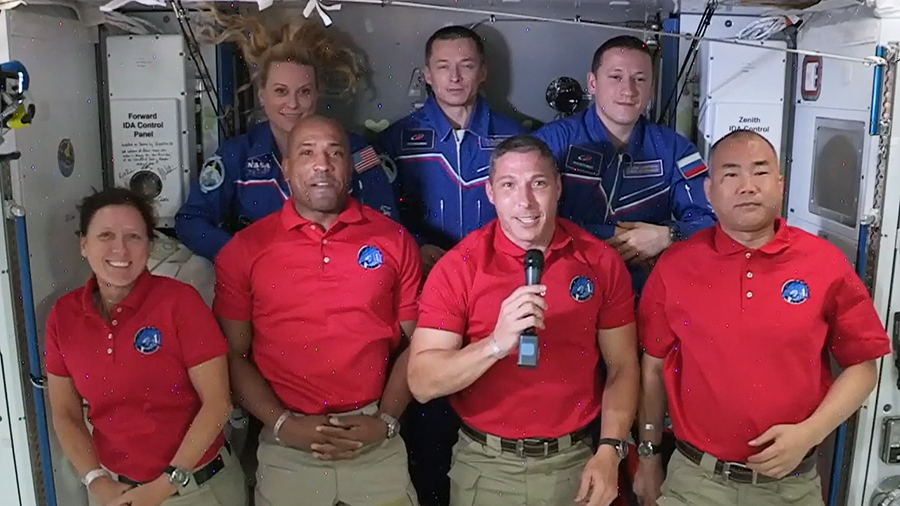 The four Commercial Crew astronauts (front row from left) Shannon Walker, Victor Glover, Michael Hopkins and Soichi Noguchi are welcomed aboard the station on Nov. 17, 2020 . In the back row from left are, NASA astronaut Kate Rubins and cosmonauts Sergey Ryzhikov and Sergey Kud-Sverchkov. Credit: NASAAfter a long day enroute from launch to docking and boarding and enlarging the ISS crew from three to seven the new astronaut team finally got some needed rest.
The four Commercial Crew astronauts (front row from left) Shannon Walker, Victor Glover, Michael Hopkins and Soichi Noguchi are welcomed aboard the station on Nov. 17, 2020 . In the back row from left are, NASA astronaut Kate Rubins and cosmonauts Sergey Ryzhikov and Sergey Kud-Sverchkov. Credit: NASAAfter a long day enroute from launch to docking and boarding and enlarging the ISS crew from three to seven the new astronaut team finally got some needed rest.
“From 3 to 7 crewmembers, the Expedition 64 team expanded overnight! The newest station astronauts are asleep today following a 27-hour-and-half trip from @NASAKennedy to the @Space_Station:” NASA tweeted.
From 3⃣ to 7⃣ crewmembers, the Expedition 64 team expanded overnight!
The newest station astronauts are asleep today following a 27-hour-and-half trip from @NASAKennedy to the @Space_Station: https://t.co/k2J0LaVlPB pic.twitter.com/LW9Tk3X04b
— NASA Commercial Crew (@Commercial_Crew) November 17, 2020
Overall the current 7 person crew comprises 4 Americans, 2 Russians and 1 Japanese.
The space station has been continuously occupied since Expedition 1 in November 2000.
The football field sized orbiting outpost has been visited by 241 individuals from 19 countries
“All for one, Crew-1 for all.” – @Astro_Soichi, from the @SpaceX Crew Dragon after docking to the @Space_Station. “Welcome to the ISS. We can’t wait to have you on board.” – Kate Rubins of @NASA_Astronauts,” NASA tweeted.
"All for one, Crew-1 for all." – @Astro_Soichi, from the @SpaceX Crew Dragon after docking to the @Space_Station. "Welcome to the ISS. We can't wait to have you on board." – Kate Rubins of @NASA_Astronauts. pic.twitter.com/tZJNtZZ92Y
— NASA (@NASA) November 17, 2020
Meanwhile there is no letup in station activities.
The two Russian cosmonauts are gearing up for a spacewalk set to start Wednesday, Nov. 18 at 9:30 a.m. EST.
NASA’s SpaceX Crew-1 mission lifted off on a Falcon 9 rocket at 7:27 p.m. EST Sunday, Nov. 15 (0027 GMT Monday) from Launch Complex 39A on Florida’s Spaceport during an instantaneous launch time.
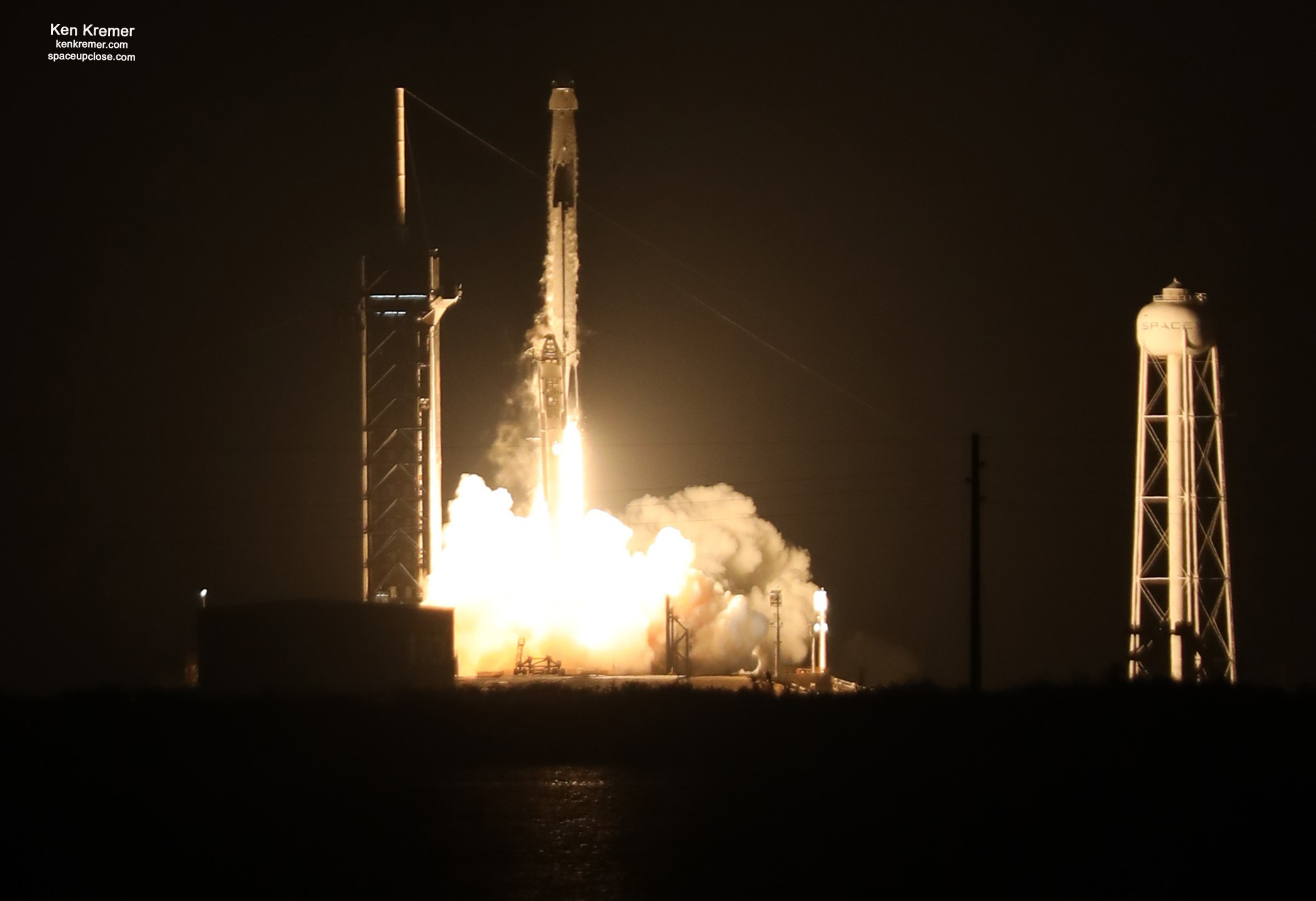
The stunning SpaceX Falcon 9 Crew Dragon liftoff took place after threatening weather moved elsewhere in the hours before the appointed time and delighted huge crowds of spectators gathered in parks and beaches ringing the Florida Space Coast who cheered as the rocket rose of the pad.
The SpaceX Crew Dragon makes history as the first NASA-certified commercial human spacecraft system ever – and will be followed by regular follow-on crew rotation missions starting next Spring 2021.
The Crew-1 mission counts as the first of at least six NASA contracted crewed missions for SpaceX that will fly as part of the agency’s Commercial Crew Program.
The gumdrop shaped Crew Dragon measures around 13 feet (4 meters) in diameter and 16 feet (5 meters) tall.
Crew Dragon is certified to stay up to 210 days in orbit before it must return to Earth with its crew.
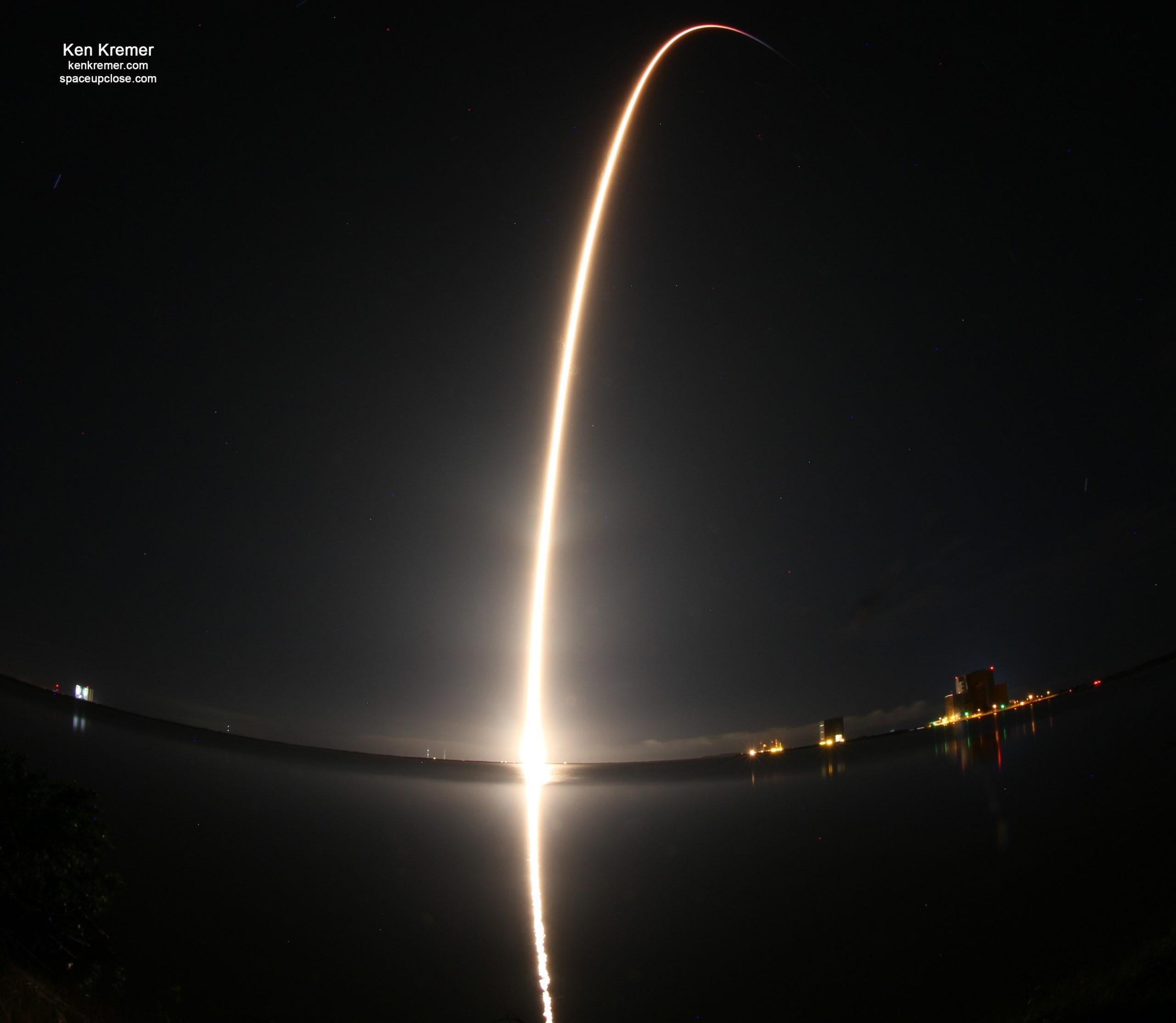
SpaceX has an incredible pace of Dragon launches upcoming.
Over the next 15 months SpaceX plans to launch 7 crew and cargo Dragons from the Space Coast.
”That means stat starting with Crew-1 there will a continuous presence of Dragon on orbit,” says SpaceX senior director on human spaceflight Benji Reed, at a prelaunch briefing.
The next cargo Dragon launch is slated for Dec. 2 on the CRS-21 mission on the first flight of the newly upgraded cargo version to the ISS.
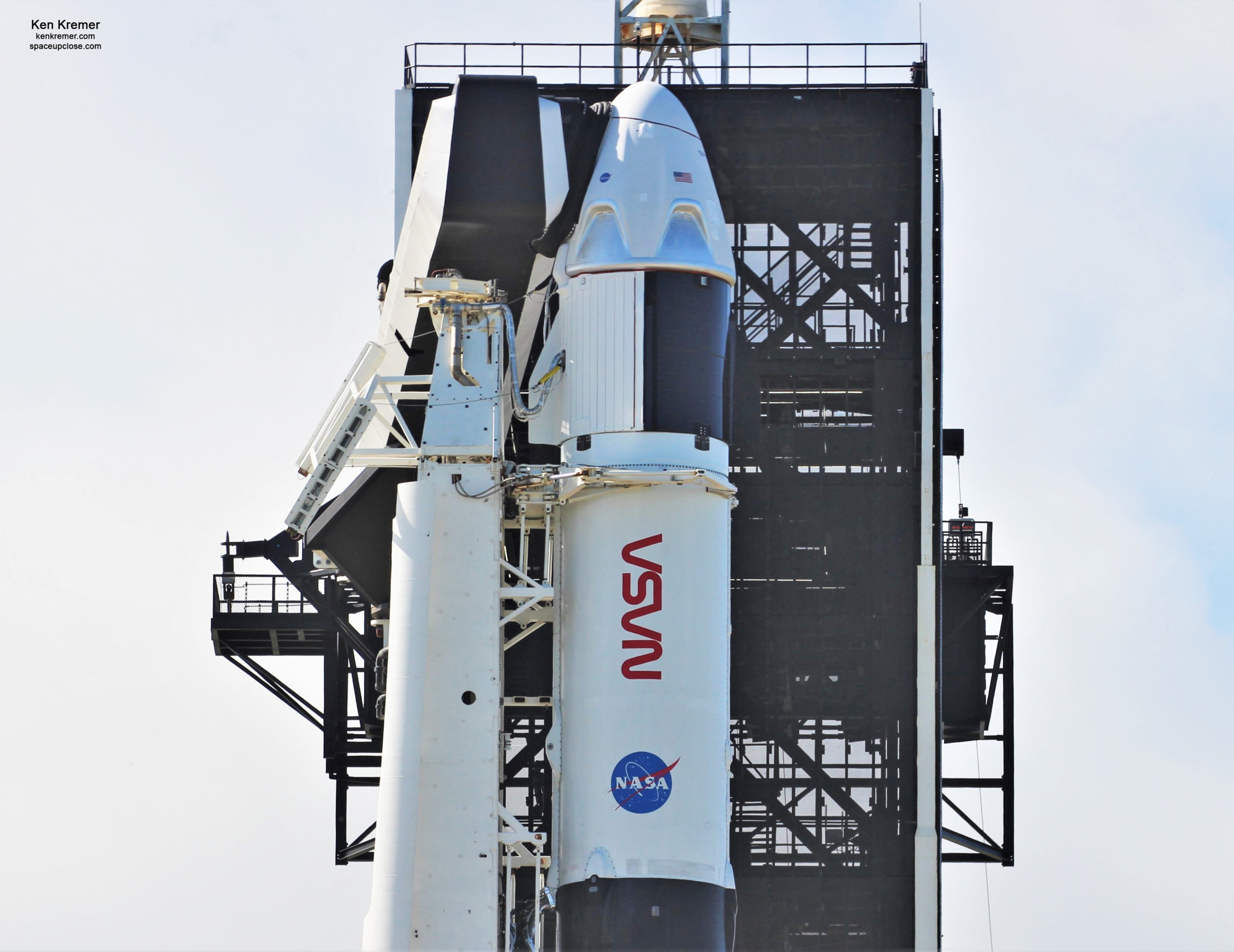
Follow along with launch, arrival and on station activities and get more information about the mission at: http://www.nasa.gov/crew-1. Learn more about commercial crew and space station activities by following: @Commercial_Crew, @space_station, and @ISS_Research on Twitter as well as the Commercial Crew Facebook, ISS Facebook and ISS Instagram accounts.
Watch Ken’s full live interview on TRT World Turkish TV News (English) about NASA SpaceX Crew-1 mission to the ISS -just minutes after Crew Dragon docked at ISS Monday night Nov. 16 :
Watch Ken’s commentary at WFTV ABC 9 Orlando and WESH 2 NBC TV News Orlando about the possible weather impact from Hurricane Eta on the launch and landing
https://www.wesh.com/article/eta-threatens-astronaut-mission/34647727
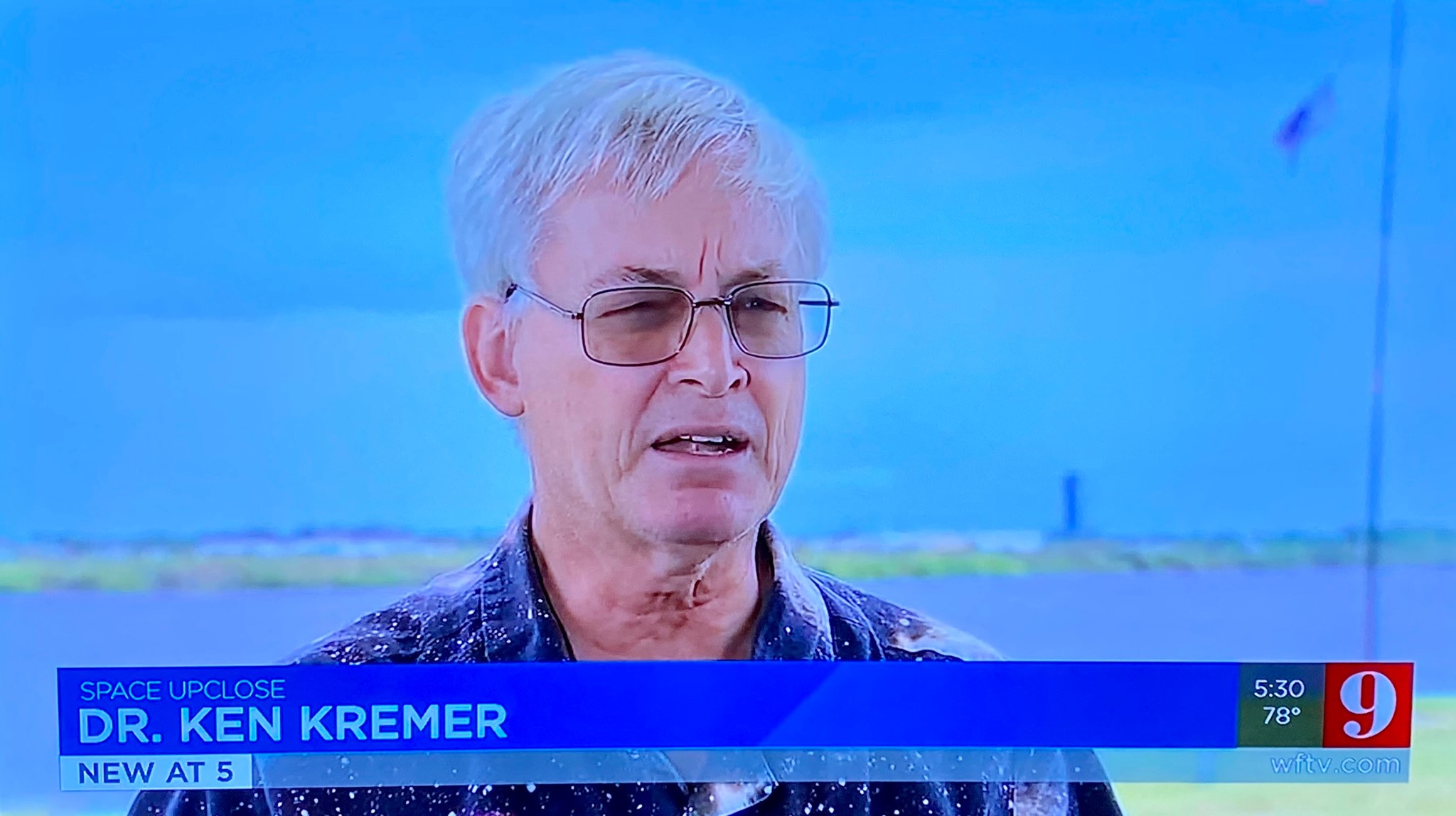
Watch for Ken’s continuing live and onsite reporting from KSC about the Crew-1 mission.
Watch Ken’s continuing reports about Crew Dragon Starlink, Commercial Crew and Artemis and onsite for live reporting of upcoming and recent SpaceX and ULA launches including Demo-2, Starlink, X-37B, Solar Orbiter, Mars 2020 and more at the Kennedy Space Center and Cape Canaveral Space Force Station.
Stay tuned here for Ken’s continuing Earth and Planetary science and human spaceflight news: www.kenkremer.com –www.spaceupclose.com – twitter @ken_kremer – email: ken at kenkremer.com
Dr. Kremer is a research scientist and journalist based in the KSC area, active in outreach and interviewed regularly on TV and radio about space topics.
………….
Ken’s photos are for sale and he is available for lectures and outreach events
Please consider supporting Ken’s work by donating at Patreon:
https://www.patreon.com/kenkremer
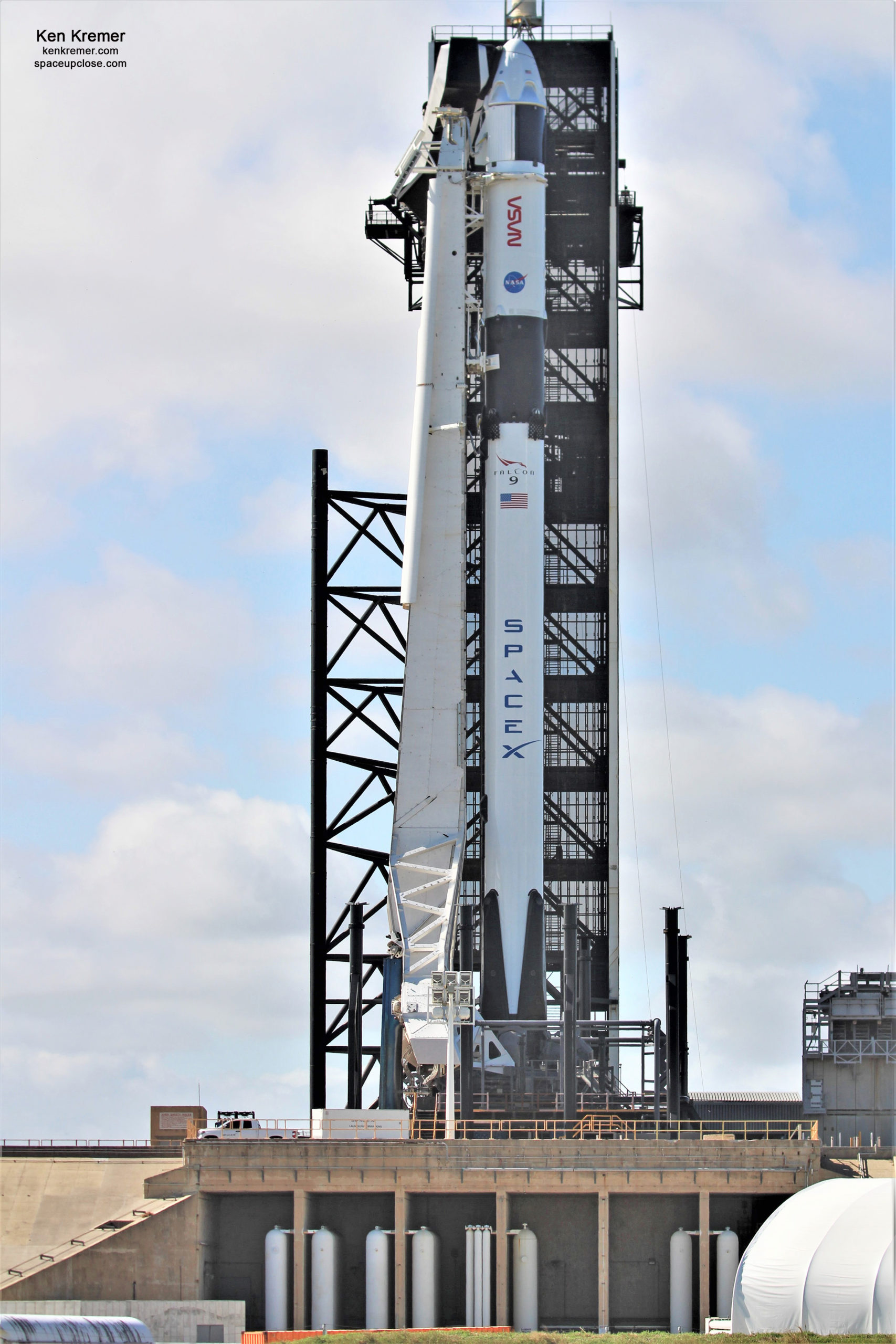
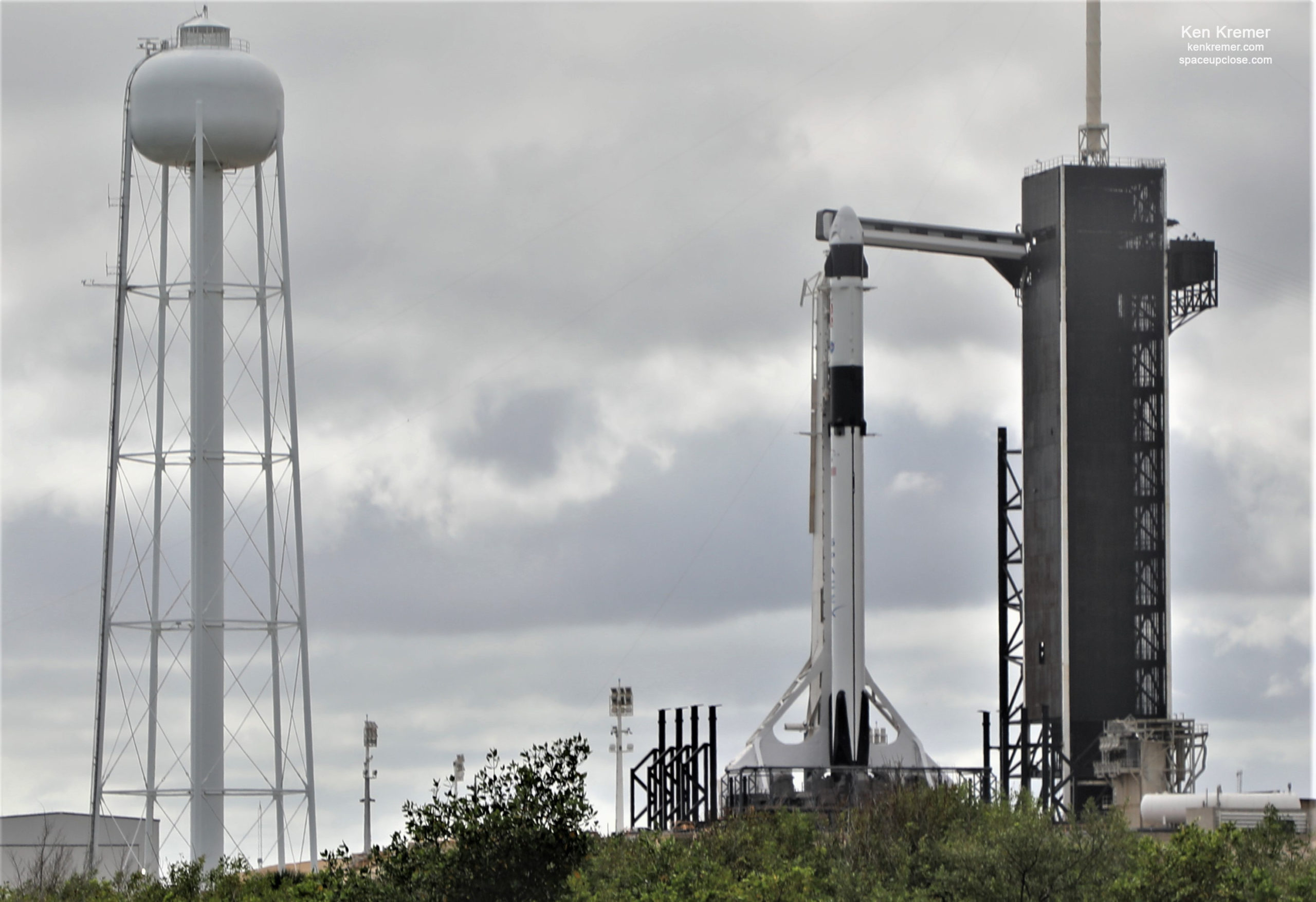
x



